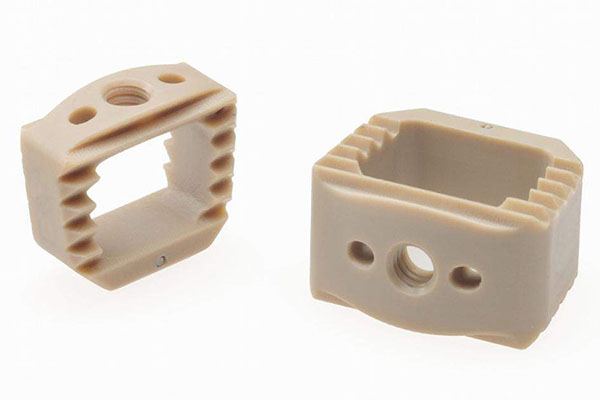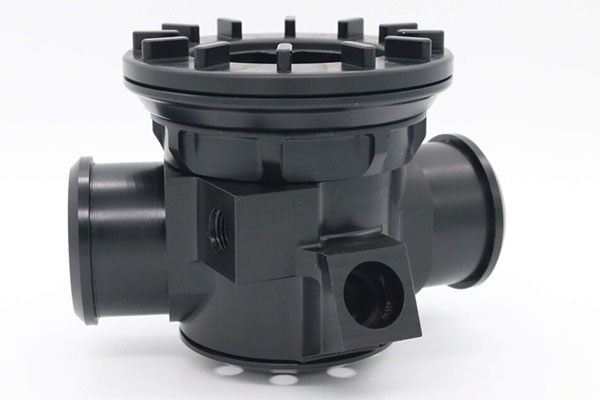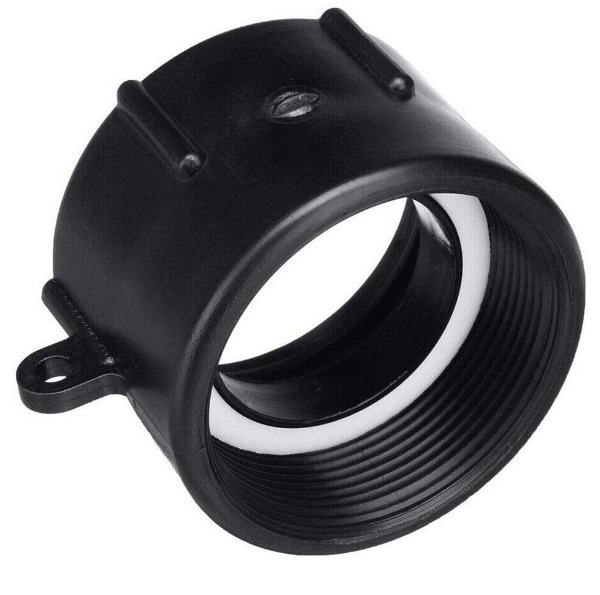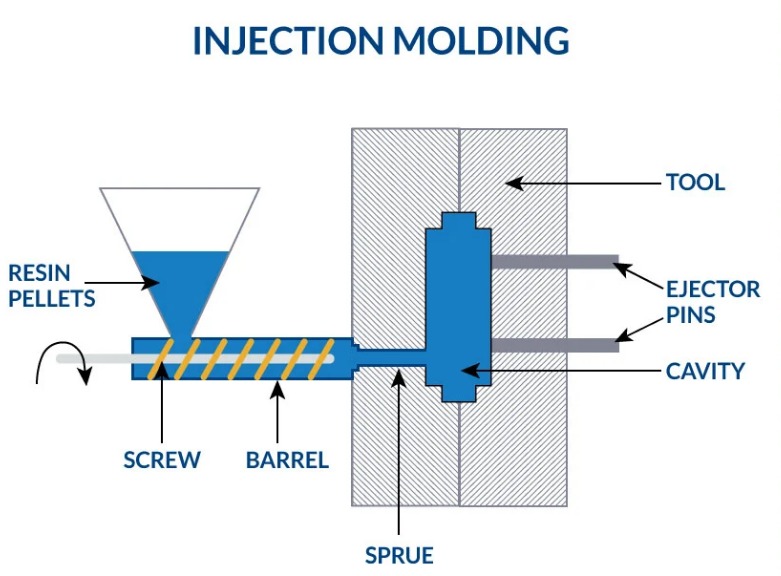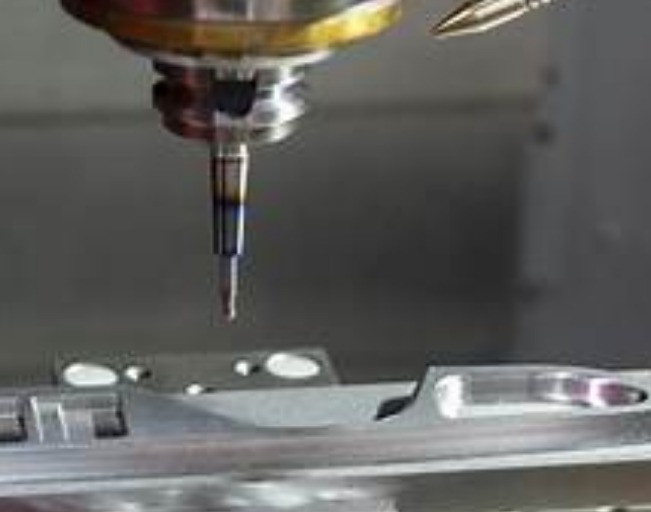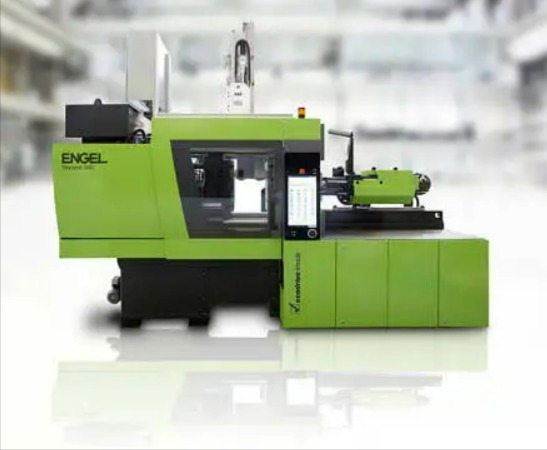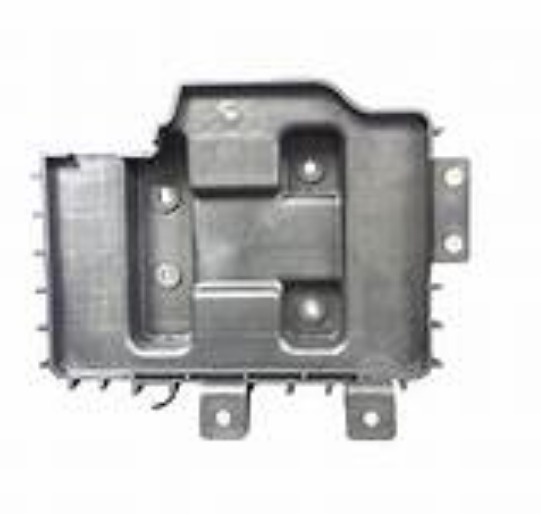Introduction
In the realm of modern manufacturing, plastic injection molding resins play a pivotal role. This process, which involves injecting molten resin into a mold cavity to create a wide range of products, has become an integral part of countless industries. From the tiniest electronic components to large - scale automotive parts, the versatility of plastic injection molding resins is truly remarkable.
The significance of these resins lies in their ability to be transformed into products with high precision, efficiency, and cost - effectiveness. They serve as the building blocks for products that we encounter in our daily lives, from the toothbrushes we use in the morning to the complex parts within our smartphones.
Understanding the different types of plastic injection molding resins, their unique properties, and the diverse applications they are suited for is crucial for manufacturers, engineers, and product designers. By making the right choice of resin, one can optimize product performance, reduce production costs, and ensure long - term durability. In the following sections, we will delve deep into the world of plastic injection molding resins, exploring each of these aspects in detail.
Types of Plastic Injection Molding Resins
Plastic injection molding resins can be broadly classified into two main types: thermoplastics and thermosets. Each type has its own unique characteristics, which determine their applications.
Thermoplastics
Thermoplastics are a type of plastic injection molding resin that can be repeatedly softened by heating and hardened by cooling. This property allows for easy processing and recycling. Some of the most common thermoplastics used in injection molding include:
- Acrylonitrile Butadiene Styrene (ABS): ABS is a popular thermoplastic known for its excellent impact resistance, dimensional stability, and surface finish. It is widely used in the automotive, electronics, and appliance industries. For example, it is used to make car interior components, such as dashboards and door panels, due to its ability to be easily molded into complex shapes while maintaining its strength. ABS also has good electrical insulation properties, making it suitable for electronic housings.
- Polypropylene (PP): PP is a lightweight and cost - effective thermoplastic with good chemical resistance, high heat resistance, and excellent fatigue resistance. It is commonly used in the production of consumer goods, automotive parts, and packaging. In the packaging industry, PP is used to make food containers, as it is both lightweight and resistant to many types of food - based chemicals. In the automotive industry, PP can be found in parts like bumpers and interior trim, where its combination of light weight and durability is highly valued.
- Polyethylene (PE): PE is one of the most widely used thermoplastics, known for its flexibility, chemical resistance, and low cost. There are different grades of PE, such as High - Density Polyethylene (HDPE) and Low - Density Polyethylene (LDPE). HDPE is used in applications that require high strength and rigidity, like pipes for water and gas distribution. LDPE, on the other hand, is more flexible and is often used in the production of plastic bags, films, and flexible packaging.
- Polycarbonate (PC): PC is a high - performance thermoplastic with outstanding impact resistance, heat resistance, and optical clarity. It is used in applications where high strength and transparency are required, such as in eyewear lenses, automotive headlamp lenses, and electronic device screens. The high impact resistance of PC makes it ideal for protective applications, like safety helmets, where it can withstand significant force without breaking.
The following table summarizes some of the key properties of these common thermoplastics:
| Thermoplastic | Impact Resistance | Heat Resistance | Chemical Resistance | Cost |
| ABS | High | Moderate | Good | Moderate |
| PP | Moderate | High | Excellent | Low |
| PE (HDPE) | Good | Moderate | Excellent | Low |
| PE (LDPE) | Good | Low | Good | Low |
| PC | High | High | Good | High |
Thermosets
Thermosets, unlike thermoplastics, undergo a chemical change when heated and cured. Once cured, they cannot be remelted or reshaped. This makes them highly stable and suitable for applications that require high heat resistance, chemical resistance, and dimensional stability. Some common thermosets used in injection molding are:
- Phenolic Resins: Phenolic resins are known for their excellent heat resistance, electrical insulation properties, and mechanical strength. They are often used in the production of electrical components, such as switchgear, connectors, and insulators. In the automotive industry, phenolic resins can be found in brake pads, where their high heat resistance and friction - related properties are crucial for safe braking. They are also used in the manufacturing of heat - resistant kitchenware, like pot handles, as they can withstand high temperatures without deforming.
- Epoxy Resins: Epoxy resins have outstanding adhesion properties, high strength, and excellent chemical resistance. They are widely used in the aerospace, electronics, and construction industries. In the aerospace industry, epoxy resins are used to bond and reinforce composite materials in aircraft structures, contributing to the overall strength and lightweight design of the aircraft. In the electronics industry, epoxy resins are used for encapsulating electronic components, protecting them from environmental factors such as moisture and dust while providing electrical insulation.
The key differences between thermoplastics and thermosets are as follows:
| Property | Thermoplastics | Thermosets |
| Processability | Can be melted and re - processed multiple times | Once cured, cannot be remelted or re - processed |
| Molecular Structure | Linear or branched chains | Cross - linked three - dimensional network |
| Recycling | Generally easier to recycle | Difficult to recycle due to their cured state |
| Heat Resistance | Varies, but generally lower than thermosets | High heat resistance |
Properties of Plastic Injection Molding Resins
Mechanical Properties
The mechanical properties of plastic injection molding resins are crucial as they determine how a product will perform under various physical stresses. Key mechanical properties include tensile strength, bending strength, and impact strength.
- Tensile Strength: This is the maximum stress a material can withstand while being stretched before breaking. For example, Polycarbonate (PC) has a relatively high tensile strength, typically around 61 - 132 MPa depending on whether it is in its standard form or reinforced. In contrast, Low - Density Polyethylene (LDPE) has a much lower tensile strength, in the range of 7 - 15 MPa. High tensile strength is essential for products like automotive parts that need to endure stretching forces during operation.
- Bending Strength: It measures a material's ability to resist bending forces. Phenolic resins, known for their high mechanical strength, have a good bending strength, which makes them suitable for applications such as brake pads in cars. ABS has a bending strength of around 69 MPa, which allows it to maintain its shape when used in components like dashboard parts.
- Impact Strength: This property indicates how well a material can withstand sudden impacts or shocks. ABS is well - known for its excellent impact strength, with a value of around 72 J/m (notched Izod). PPO (Polyphenylene Oxide), on the other hand, has a relatively lower impact strength. High - impact - resistant resins like ABS are used in products such as protective cases for electronic devices, where they need to absorb the energy from drops or impacts.
The following table shows a comparison of the mechanical properties of some common resins:
| Resin | Tensile Strength (MPa) | Bending Strength (MPa) | Impact Strength (J/m, notched Izod) |
| ABS | 35 - 62 | 69 | 72 |
| PP | 29 | 11 (approx., for unreinforced) | Moderate (varies by grade) |
| PE (HDPE) | 22 - 30 | 10 (approx.) | Good |
| PE (LDPE) | 7 - 15 | Low | Good |
| PC | 61 - 132 | 82 - 170 | High (e.g., 20 for standard, higher for some grades) |
These mechanical properties directly influence the performance and durability of the final products. A product with high - strength requirements, like a structural component in an industrial machine, will need a resin with high tensile and bending strength. A product that may be subject to impacts, such as a children's toy, requires a resin with good impact strength.
Thermal Properties
Thermal properties of plastic injection molding resins play a significant role in determining their applications, especially in environments with varying temperatures.
- Heat Deflection Temperature (HDT): This is the temperature at which a material begins to deform under a specified load. For instance, Polypropylene (PP) has a relatively high HDT. Unreinforced PP typically has an HDT of around 65 - 110°C, depending on the grade. In contrast, PVC has a lower HDT, usually around 70°C. High - heat - resistant applications, like the components in a hot - air blower, require resins with a high HDT, so materials like high - heat - resistance grades of PP or PC may be used.
- Glass Transition Temperature (Tg): It is the temperature at which a polymer changes from a hard, glassy state to a more rubbery or flexible state. PC has a high Tg, around 145 - 150°C. This high Tg allows PC to maintain its mechanical properties and dimensional stability at relatively high temperatures. In comparison, LDPE has a much lower Tg, close to - 120°C, which is why it is flexible at room temperature.
The table below shows the thermal properties of some common resins:
| Resin | Heat Deflection Temperature (°C) | Glass Transition Temperature (°C) |
| ABS | 84 - 89 | 105 (approx.) |
| PP | 65 - 110 (unreinforced) | - 10 to 0 (approx.) |
| PE (HDPE) | 60 - 80 (approx.) | - 125 (approx.) |
| PE (LDPE) | 40 - 50 (approx.) | - 120 (approx.) |
| PC | 138 - 143 | 145 - 150 |
In applications where the product will be exposed to high temperatures, such as in the automotive engine compartment or in industrial ovens, resins with high HDT and Tg values are preferred. Resins with low Tg values are suitable for applications where flexibility at low temperatures is required, like in cold - storage packaging made from LDPE.
Chemical Resistance
Chemical resistance is another critical property of plastic injection molding resins, especially in applications where the product will come into contact with various chemicals.
- Acids and Bases: Polyethylene (PE) and Polypropylene (PP) have excellent resistance to many acids and bases. For example, they can withstand exposure to dilute sulfuric acid and sodium hydroxide solutions without significant degradation. In contrast, some resins like Polystyrene (PS) are more sensitive to certain chemicals and may dissolve or degrade when in contact with strong oxidizing acids.
- Solvents: PTFE (Polytetrafluoroethylene) is highly resistant to most solvents. It can be used in applications where contact with organic solvents is common, such as in chemical processing equipment. ABS, while having good general - purpose properties, may be affected by some solvents like acetone, which can cause it to soften or even dissolve over time.
The following table presents the chemical resistance of some common resins to a few selected chemicals:
| Resin | Resistance to Dilute Sulfuric Acid | Resistance to Sodium Hydroxide Solution | Resistance to Acetone |
| ABS | Good | Good | Poor |
| PP | Excellent | Excellent | Good |
| PE (HDPE) | Excellent | Excellent | Good |
| PE (LDPE) | Good | Good | Good |
| PTFE | Excellent | Excellent | Excellent |
In industries such as chemical manufacturing, food processing (where contact with cleaning chemicals is common), and pharmaceutical production, the chemical resistance of the resins used in equipment, containers, and components is of utmost importance. Choosing a resin with the right chemical - resistance properties ensures the integrity and functionality of the product in these chemically - challenging environments.
Applications of Plastic Injection Molding Resins
Automotive Industry
In the automotive industry, plastic injection molding resins are extensively used due to their lightweight nature, cost - effectiveness, and excellent mechanical properties.
For automotive interiors, materials like ABS are commonly used. ABS is used to make dashboards, as it can be easily molded into complex shapes while maintaining its strength and providing a good surface finish. It also has good heat resistance, which is important as the interior of a car can heat up significantly in sunlight. Door panels are often made from a combination of plastics, with PP being a popular choice for its low cost and decent impact resistance. PP is also used in the production of seat components, where its light - weight and fatigue - resistance properties are beneficial.
Exterior parts such as bumpers are frequently made from PP or a blend of PP with other polymers. These materials can be designed to be flexible enough to absorb impacts while maintaining their shape and appearance over time. The use of plastic resins in bumpers also helps in reducing the overall weight of the vehicle, which in turn improves fuel efficiency.
In the engine compartment, phenolic resins are used in components like brake pads and clutch facings. Their high heat resistance and good friction - related properties make them ideal for these applications, ensuring safe and reliable operation of the vehicle's braking and transmission systems.
Electronics Industry
The electronics industry relies heavily on plastic injection molding resins for a variety of applications. For the 外壳 of electronic devices, materials like PC and ABS are commonly used. PC offers high impact resistance and optical clarity, which is useful for products such as smartphone screens and tablet casings. It can protect the internal components from impacts while providing a clear view of the display. ABS, on the other hand, is popular for its good electrical insulation properties, dimensional stability, and relatively low cost. It is used in the casings of laptops, game consoles, and many other electronic devices.
Inside the electronics, small components such as connectors and insulators are often made from thermosetting resins like epoxy. Epoxy resins have excellent adhesion properties, high strength, and outstanding electrical insulation. They can securely hold the electronic components in place while preventing electrical shorts, ensuring the proper functioning of the device. For example, in a printed circuit board (PCB), epoxy resins are used to encapsulate and protect the delicate electronic circuits from environmental factors such as moisture and dust.
Yigu Technology's Viewpoint
As a non - standard plastic metal products custom Supplier, Yigu Technology deeply understands the critical role of plastic injection molding resins. The right resin selection is the cornerstone of high - quality custom products. It directly impacts the product's quality, performance, and durability.
With years of experience in material application and product manufacturing, Yigu Technology can accurately match the most suitable resin to different product requirements. Whether it's the need for high - strength materials in industrial equipment parts or the demand for chemical - resistant resins in products for the chemical industry, we have the expertise to make the best choices. Our technical team can also optimize resin - related processes to ensure efficient production and cost - effectiveness, always striving to provide customers with top - notch custom plastic metal products.
FAQ
What are the main differences between thermoplastics and thermosets?
Thermoplastics can be softened by heating and hardened by cooling repeatedly. This allows for easy processing and recycling. Their molecular structure consists of linear or branched chains. Common thermoplastics include ABS, PP, PE, and PC. On the other hand, thermosets undergo a chemical change when heated and cured. Once cured, they form a cross - linked three - dimensional network and cannot be remelted or reshaped. Examples are phenolic resins and epoxy resins. Thermosets generally have higher heat resistance and are more difficult to recycle compared to thermoplastics.
How to choose the right plastic injection molding resin for a specific product?
Firstly, consider the product's use environment. If it will be exposed to high temperatures, choose a resin with high heat resistance like PC or phenolic resins. For products in contact with chemicals, resins with good chemical resistance such as PE or PTFE are suitable. Secondly, think about performance requirements. High - strength products need resins with high tensile and bending strength. For products prone to impacts, resins with excellent impact strength like ABS are ideal. Finally, consider the cost budget. Some high - performance resins like PC are more expensive, while PE and PP are more cost - effective. Balancing these factors will help in choosing the right resin.
Are there any environmental - friendly plastic injection molding resins available?
Yes, there are. One example is biodegradeable resins such as Poly Lactic Acid (PLA). PLA is made from renewable resources like corn starch or sugarcane. It can break down naturally in the environment, reducing plastic waste. Another is Poly Hydroxyalkanoates (PHA), which is produced by microbial fermentation. These environmental - friendly resins are increasingly used in applications such as packaging and disposable products, with a promising future as the demand for sustainable materials grows.
